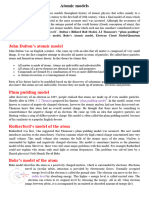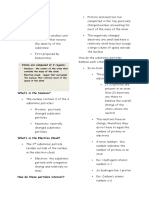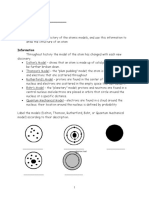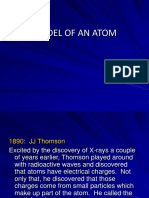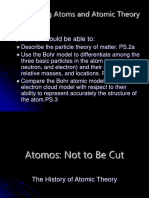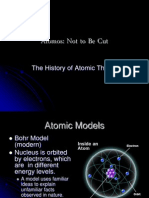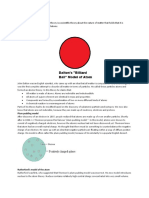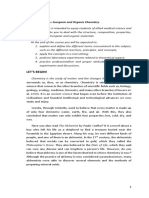0% found this document useful (0 votes)
4 views32 pagesAtomic Structure Notes
This document provides a comprehensive overview of atomic structure, tracing its historical development from ancient Greek theories to modern quantum mechanics. It discusses key models proposed by scientists such as Dalton, Thomson, Rutherford, and Bohr, highlighting their contributions and limitations. Additionally, it explains fundamental concepts like isotopes, isobars, electron configurations, and the principles governing atomic behavior.
Uploaded by
vijval1206Copyright
© © All Rights Reserved
We take content rights seriously. If you suspect this is your content, claim it here.
Available Formats
Download as PDF, TXT or read online on Scribd
0% found this document useful (0 votes)
4 views32 pagesAtomic Structure Notes
This document provides a comprehensive overview of atomic structure, tracing its historical development from ancient Greek theories to modern quantum mechanics. It discusses key models proposed by scientists such as Dalton, Thomson, Rutherford, and Bohr, highlighting their contributions and limitations. Additionally, it explains fundamental concepts like isotopes, isobars, electron configurations, and the principles governing atomic behavior.
Uploaded by
vijval1206Copyright
© © All Rights Reserved
We take content rights seriously. If you suspect this is your content, claim it here.
Available Formats
Download as PDF, TXT or read online on Scribd
/ 32





